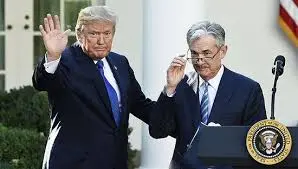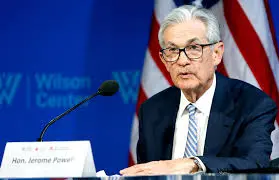The Federal Reserve suddenly released a significant signal!
Author丨Wu Bin Chen Zhi, 21st Century Business Herald
Editor丨Bao Fangming Zhang Mingxin
On the evening of April 18 to the early morning of April 19, several Federal Reserve officials made intensive statements, releasing significant signals! They even rarely mentioned the possibility of interest rate hikes.
Federal Reserve Officials Intensively Signal!
In the early morning of April 19, Atlanta Fed President Bostic stated that if inflation stagnates, there will be no choice but to respond. If inflation stagnates or moves in the opposite direction, it is essential to maintain an open attitude towards raising interest rates; controlling inflation is very important. If inflation declines faster than expected, there may be an early rate cut, and the overall risk outlook is balanced.
The president of the New York Fed, known as the "third-in-command" of the Federal Reserve, Williams warned that if the data shows that the Fed needs to raise interest rates to achieve its goals, then the Fed will raise rates.
Additionally, the New York Federal Reserve released monetary policy signals, expecting that the Fed may not stop shrinking its balance sheet until 2025. According to a report by Securities China, Nick Timiraos, a journalist from the Wall Street Journal known as the "new Federal Reserve news agency," believes that compared to Fed Chair Powell's speech, the mention of rate hike scenarios by the "third-in-command" of the Fed is relatively more damaging to the market.
Under the pressure of the Fed's "hawkish" remarks, the U.S. stock market once again collectively plummeted.
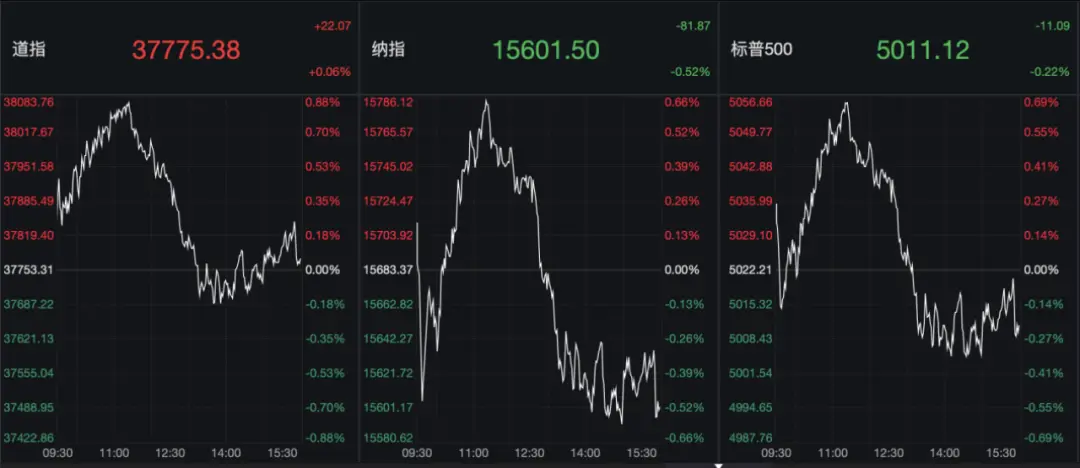 As of the close, both the S&P and Nasdaq have fallen for five consecutive days, with the S&P down 0.22%, marking the longest consecutive decline since October last year; the Nasdaq fell 0.52%, hitting a closing low not seen since February 21 for four consecutive days; the Dow barely rose 0.06%.
As of the close, both the S&P and Nasdaq have fallen for five consecutive days, with the S&P down 0.22%, marking the longest consecutive decline since October last year; the Nasdaq fell 0.52%, hitting a closing low not seen since February 21 for four consecutive days; the Dow barely rose 0.06%.
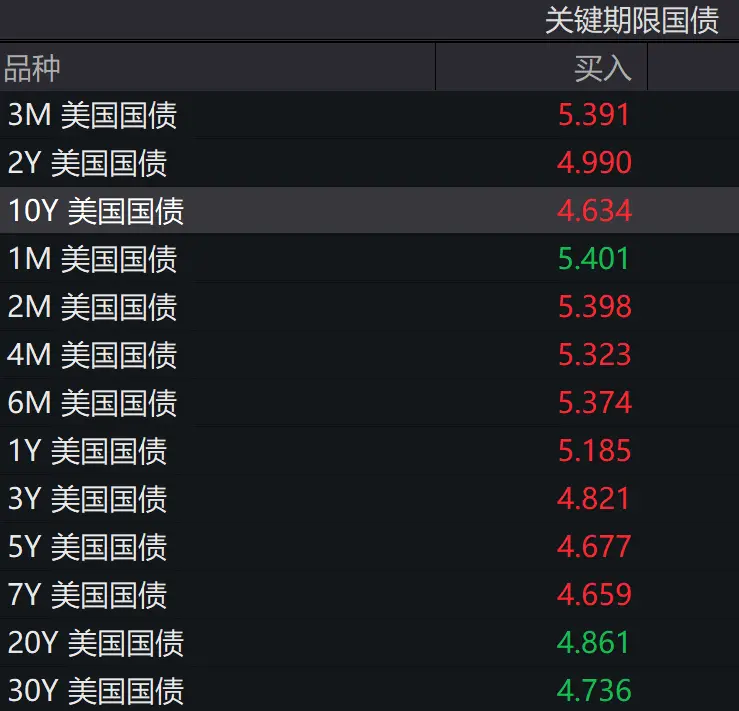 Latest situation of U.S. Treasury bonds of various maturities
Latest situation of U.S. Treasury bonds of various maturities
On Thursday (April 18), U.S. Treasury yields collectively rose, with the 2-year Treasury yield up 5 basis points to 4.993%, the 3-year yield up 5.5 basis points to 4.828%, the 5-year yield up 5.5 basis points to 4.679%, the 10-year yield up 4.2 basis points to 4.636%, and the 30-year yield up 2.5 basis points to 4.73%.
More Signals Needed for U.S. Rate Cuts
According to CME's "FedWatch," the probability of the Fed maintaining interest rates in May is 98.7%, while the probability of a 25 basis point hike is 1.3%. The probability of the Fed maintaining interest rates until June is 79.9%, and the cumulative probability of a 25 basis point rate cut is 16.3%. Nancy Vanden Houten, an economist at Oxford Economics, told reporters from the 21st Century Business Herald that about half of the indicators in the data we track show that the labor market tightened in March, which is contrary to the Fed's efforts to reduce inflation. A strong labor market means the Fed needs to maintain high rates for a longer time to ensure sustainable inflation decline.
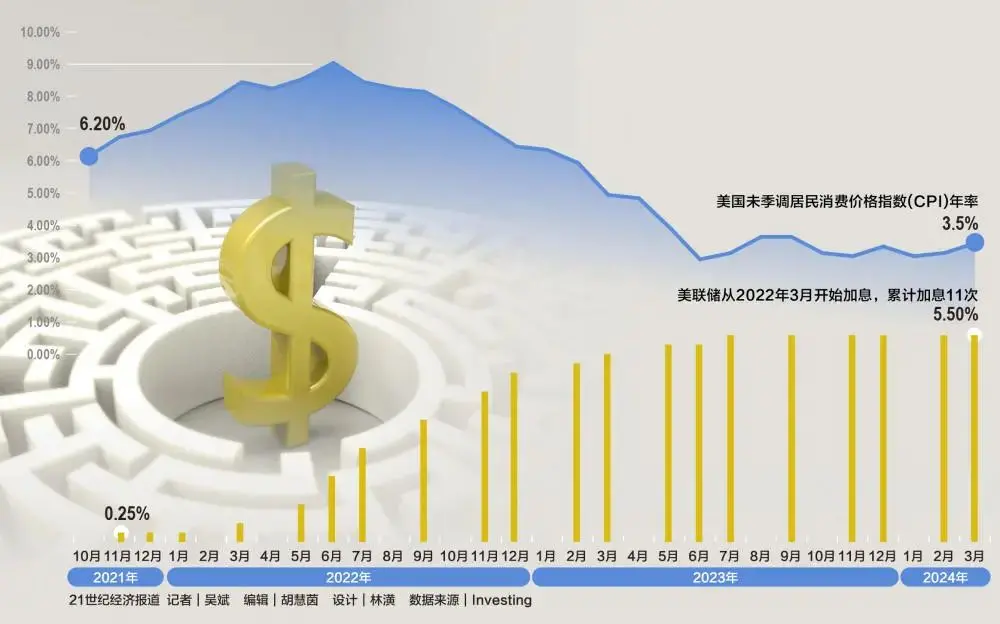 In Houten's view, the resilient labor market, strong consumer spending, and higher-than-expected inflation data have weakened the Fed's confidence in achieving 2% inflation, and the Fed's first rate cut may be delayed until September. Zhao Wei, chief economist at Guojin Securities, told reporters from the 21st Century Business Herald that the urgency for the Fed to cut rates is not high, but the resistance is not as great as imagined. A timely rate cut in 2024 remains the Fed's baseline assumption, with June to September being the best "window period" for rate cuts, and the timing of rate cuts is being pushed back, with about two cuts expected throughout the year. However, this is not without conditions; overly loose financial conditions will increase the uncertainty of subsequent inflation, thereby compressing the Fed's space for rate cuts.
In Houten's view, the resilient labor market, strong consumer spending, and higher-than-expected inflation data have weakened the Fed's confidence in achieving 2% inflation, and the Fed's first rate cut may be delayed until September. Zhao Wei, chief economist at Guojin Securities, told reporters from the 21st Century Business Herald that the urgency for the Fed to cut rates is not high, but the resistance is not as great as imagined. A timely rate cut in 2024 remains the Fed's baseline assumption, with June to September being the best "window period" for rate cuts, and the timing of rate cuts is being pushed back, with about two cuts expected throughout the year. However, this is not without conditions; overly loose financial conditions will increase the uncertainty of subsequent inflation, thereby compressing the Fed's space for rate cuts.
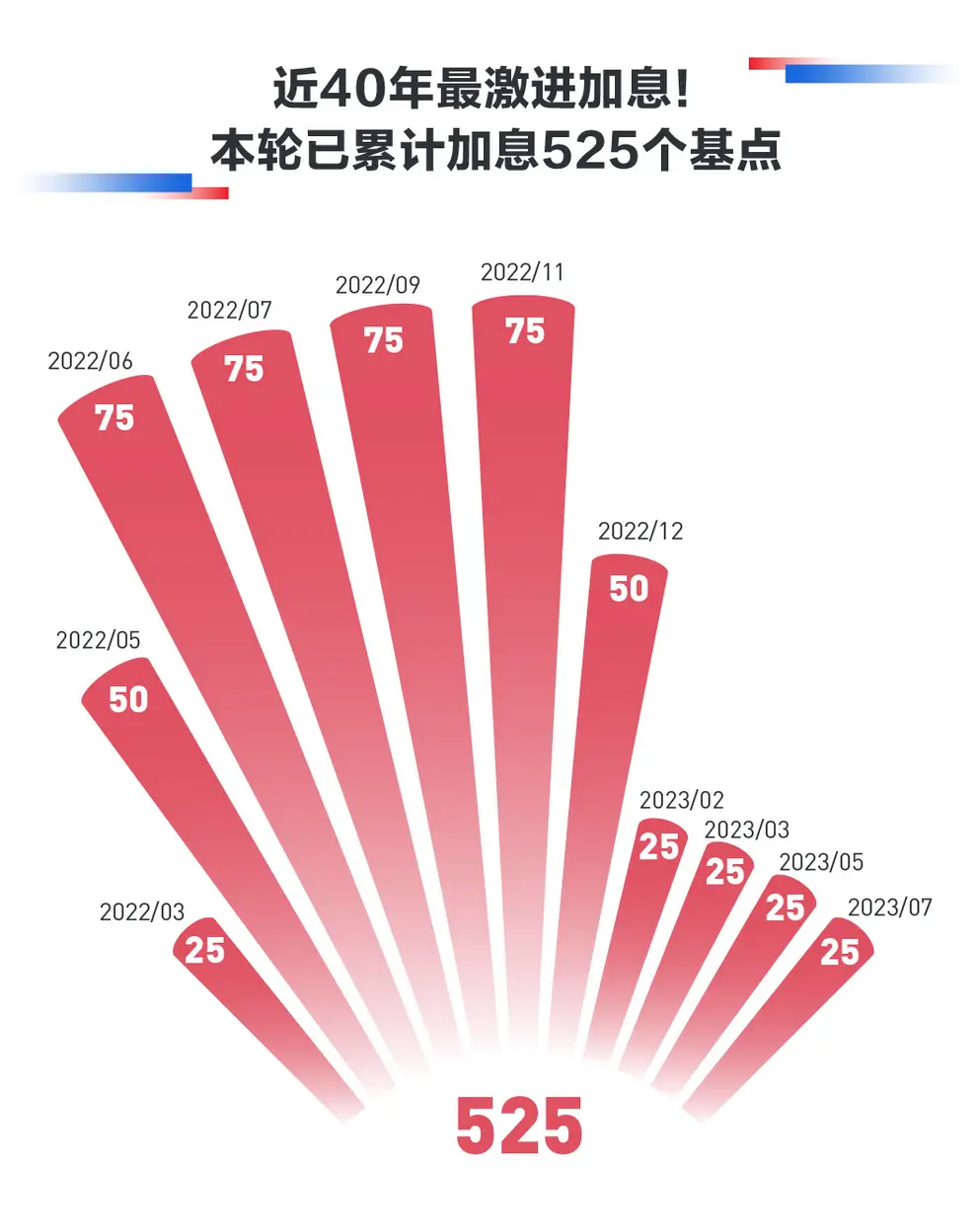
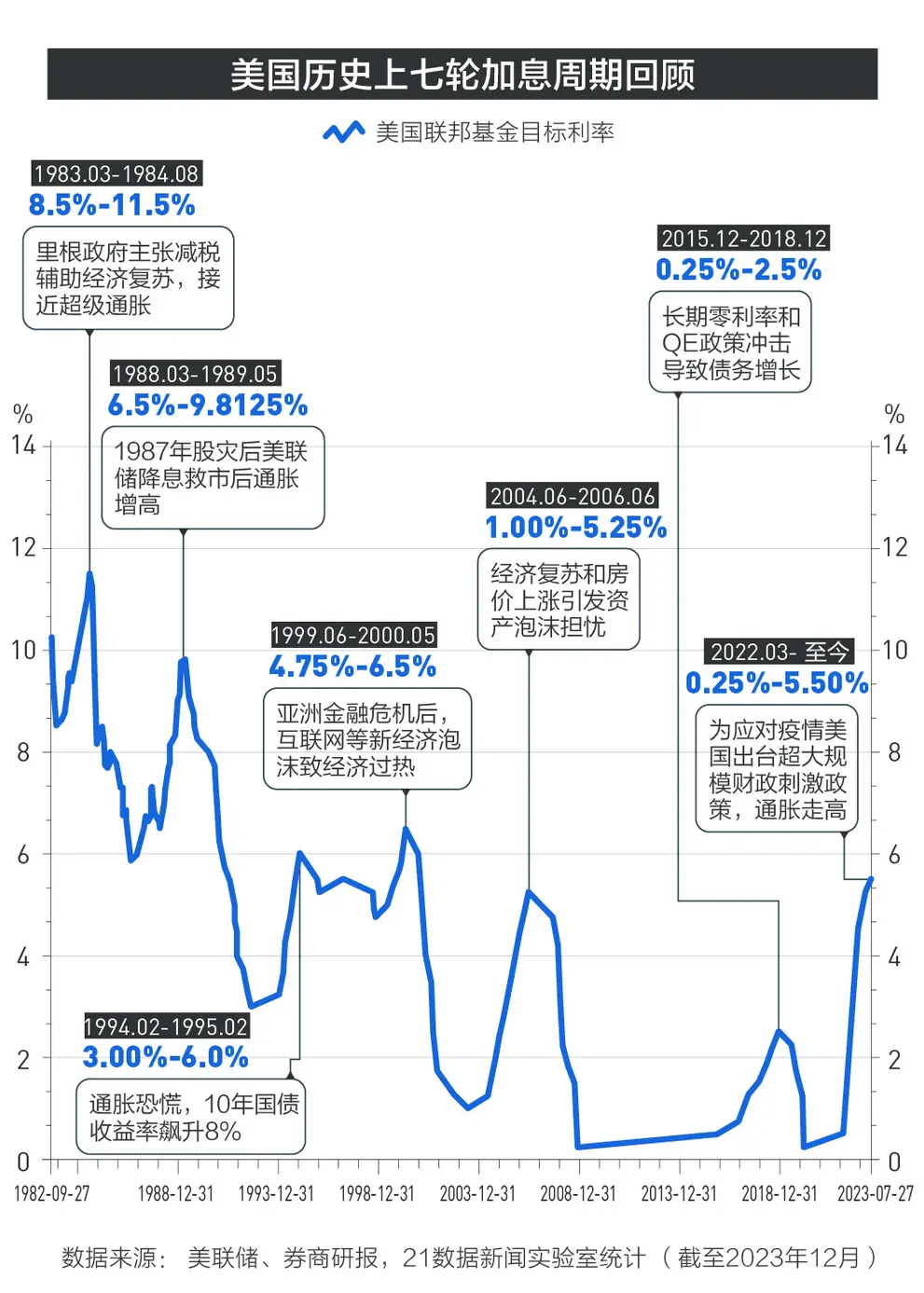 Source of the image / 21 Data News Laboratory statistics
Source of the image / 21 Data News Laboratory statistics
Overall, optimism about the U.S. economy currently dominates, and the urgency for the Fed to cut rates has decreased. Traders now expect the Fed to cut rates only once or twice this year, far fewer than the approximately six cuts expected at the beginning of 2024, and lower than the three cuts predicted by the Fed's March dot plot. Some investors and economists even believe that the Fed may not cut rates at all this year. 【See more→】
China Reduced $22.7 Billion in U.S. Treasuries in February
Affected by the rising expectations of the Fed delaying rate cuts, the trading strategies of global central banks regarding U.S. Treasuries have once again diverged.
In the early morning of April 18, the U.S. Treasury Department released the latest International Capital Flow Report (TIC), showing that in February, Japan, France, and the UK increased their holdings of U.S. Treasuries by $16.4 billion, $15.4 billion, and $9.6 billion, respectively. As of the end of February, Japan's holdings of U.S. Treasuries reached $1.1679 trillion, the highest level since August 2022.
In contrast, China reduced its holdings of U.S. Treasuries by $22.7 billion in February, bringing its total holdings down to $775 billion, approaching the lowest level since 2009.
However, China was not the country that reduced its U.S. Treasury holdings the most in February; Switzerland reduced its holdings by $26.5 billion.
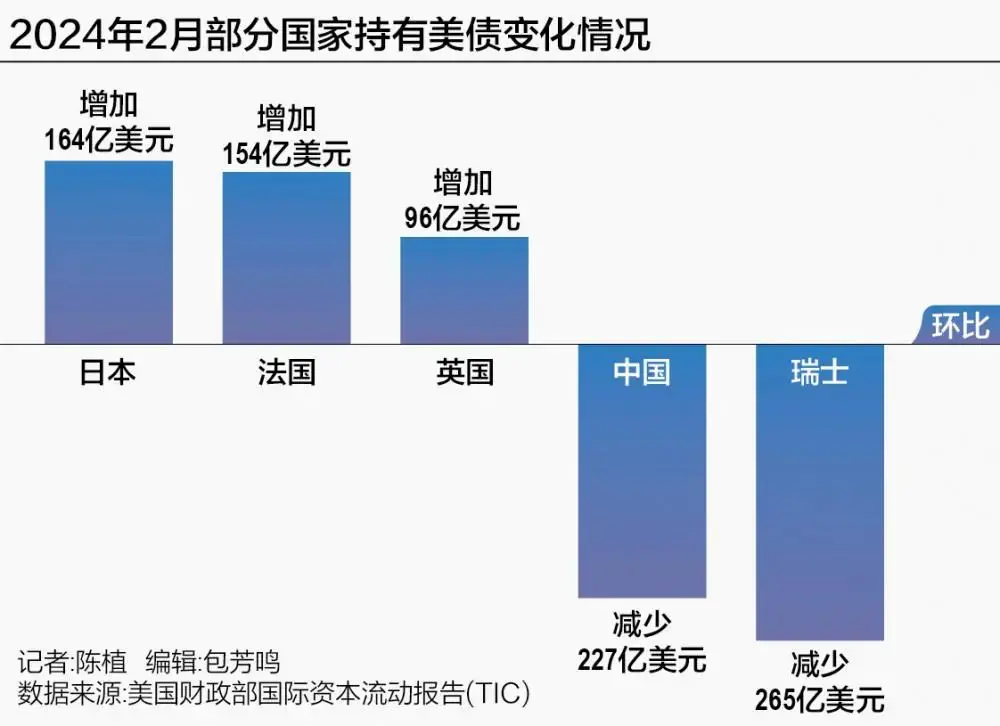
"Currency War" on the Horizon! Divergence in Central Bank Trading
A Wall Street hedge fund manager analyzed that the divergence in U.S. Treasury trading strategies among countries is largely related to their respective monetary policy trends and the safety requirements of reserve asset allocation.
Currently, the strong dollar is causing a comprehensive storm for Asian currencies.

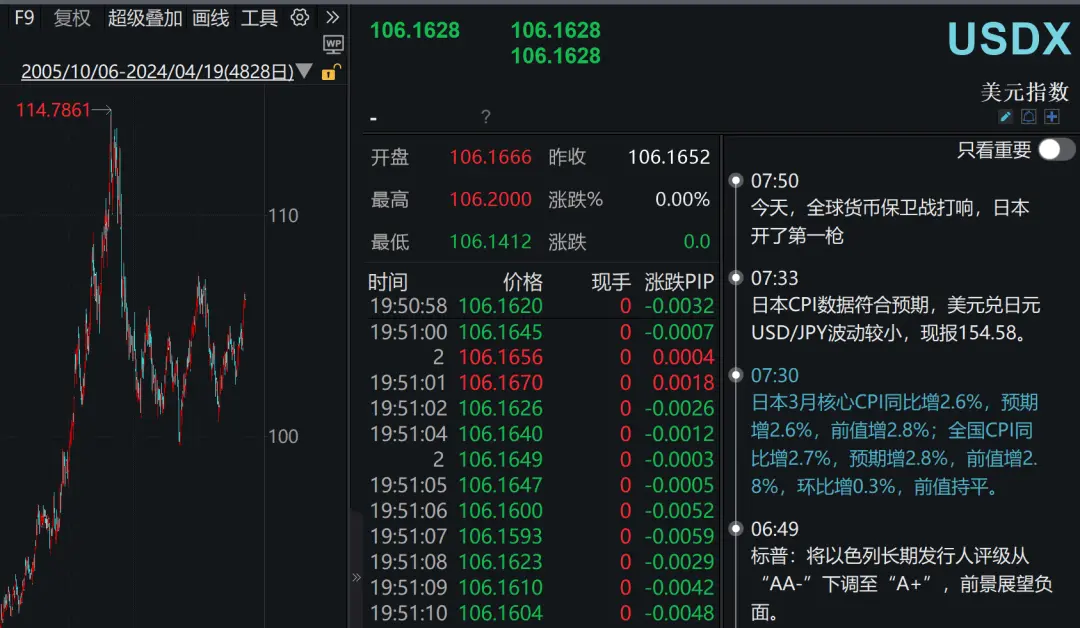 As of the morning of April 19, the latest situation of the dollar index
As of the morning of April 19, the latest situation of the dollar index
As the appreciation of the dollar puts depreciation pressure on Asian currencies, officials from South Korea and Japan have rarely joined forces to verbally intervene in the foreign exchange market.
The defense of Asian currencies is on the brink!
Specifically, although Japan has entered a tightening cycle, the Bank of Japan is "hesitant" about aggressive rate hikes, and market expectations of the Fed continuing to delay rate cuts have led to the yen's disadvantage in the dollar-yen interest rate differential remaining at historically high levels for a longer time, resulting in a large amount of Japanese funds investing in U.S. Treasuries to earn risk-free interest rate differentials.
Similar situations are also seen in the UK and some European countries. Due to market expectations that the Bank of England and the European Central Bank will cut rates faster than the Fed, capital from the UK and Europe has been reducing local bonds with declining yields and reallocating to U.S. Treasuries with relatively higher yields.
In contrast, countries like China have a "self-centered" monetary policy, focusing more on the risks brought by the Fed's delayed rate cuts leading to falling U.S. Treasury prices (high yields), and accordingly reducing some U.S. Treasuries to enhance the preservation effect of reserve assets.
In the view of this hedge fund manager, influenced by the rising expectations of the Fed delaying rate cuts, many central banks may reduce their holdings of short-term U.S. Treasuries, as their prices are more susceptible to the Fed's delayed rate cuts. Correspondingly, these countries will increase their holdings of medium- to long-term U.S. Treasuries to achieve higher returns on U.S. Treasury asset allocation.
On April 18, the U.S. Treasury issued $13 billion in 20-year bonds. As an indicator of overseas demand, the proportion allocated to indirect bidders (foreign central banks and other institutions participating in the bidding through primary dealers or brokers) reached 74.7%, the highest since February 2023, just slightly below the historical record. The reason for this is that the yield on the 20-year U.S. Treasury bonds issued this time reached 4.818%, the second highest in history, showing a high return on the hold-to-maturity strategy.
Several industry insiders pointed out that in the future, the trading strategies of many central banks regarding U.S. Treasuries will continue to diverge, as the recent surge in the dollar has led to a significant decline in non-dollar currencies, which may force some countries to reduce their U.S. Treasury holdings to raise dollars for intervening in the foreign exchange market to stabilize their currency exchange rates.
"Even Japan, which had continuously increased its U.S. Treasury holdings for five consecutive months, may join the ranks of reducing U.S. Treasuries." An emerging market hedge fund manager analyzed. Additionally, due to the ongoing escalation of international geopolitical risks, the allocation trends of different types of countries towards U.S. Treasuries will also continue to diverge—Western countries may continue to increase their U.S. Treasury holdings, but an increasing number of emerging market countries will accelerate the diversification of their foreign exchange reserve asset allocation.
"If a new emerging market country's foreign exchange reserves have a higher proportion of U.S. Treasuries and other dollar assets, it indicates that the country's currency exchange rate is more dependent on the dollar. Once the dollar strengthens and causes a significant depreciation of its currency exchange rate, it will instead exacerbate the capital outflow pressure on that country, which is detrimental to its financial stability," he stated.







